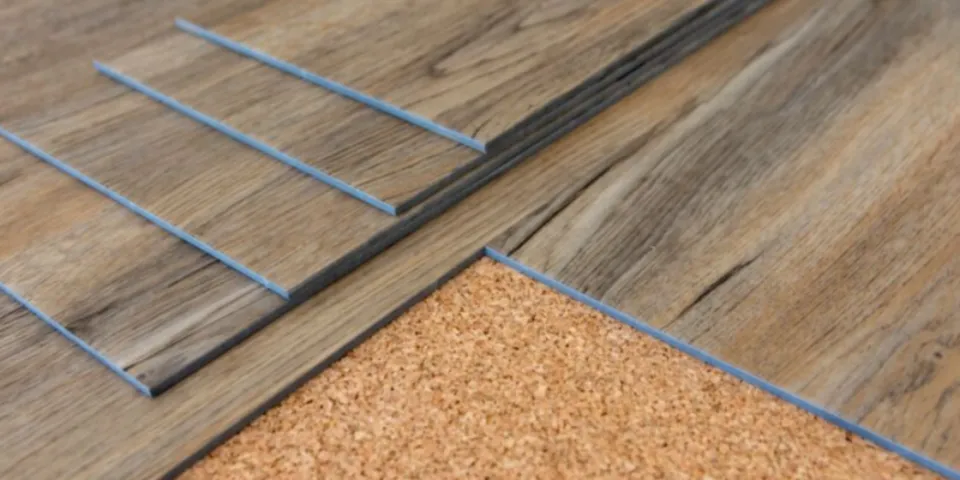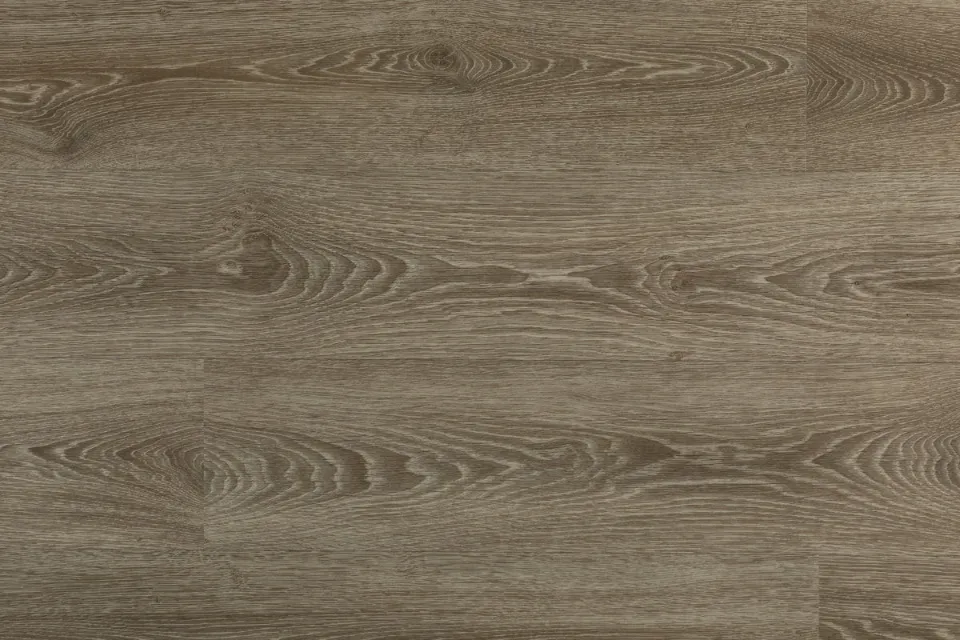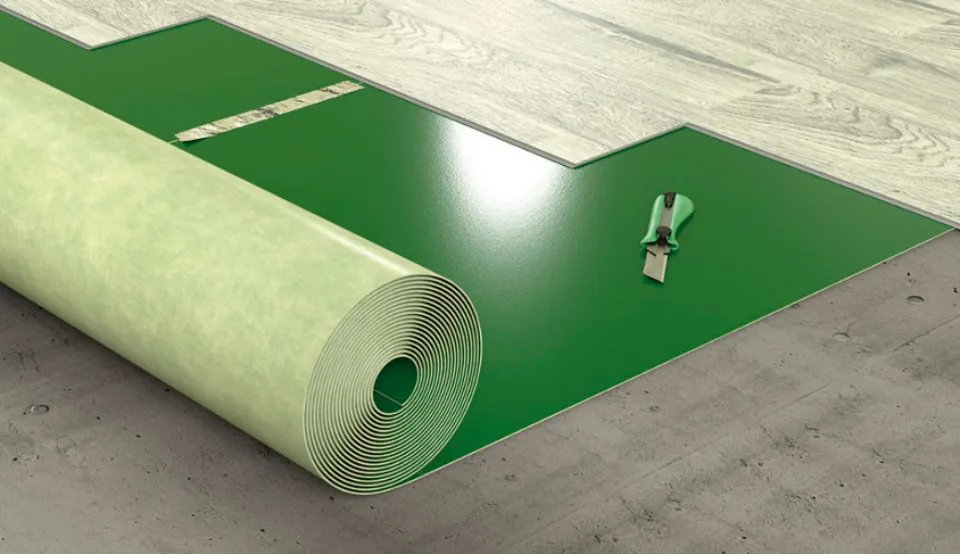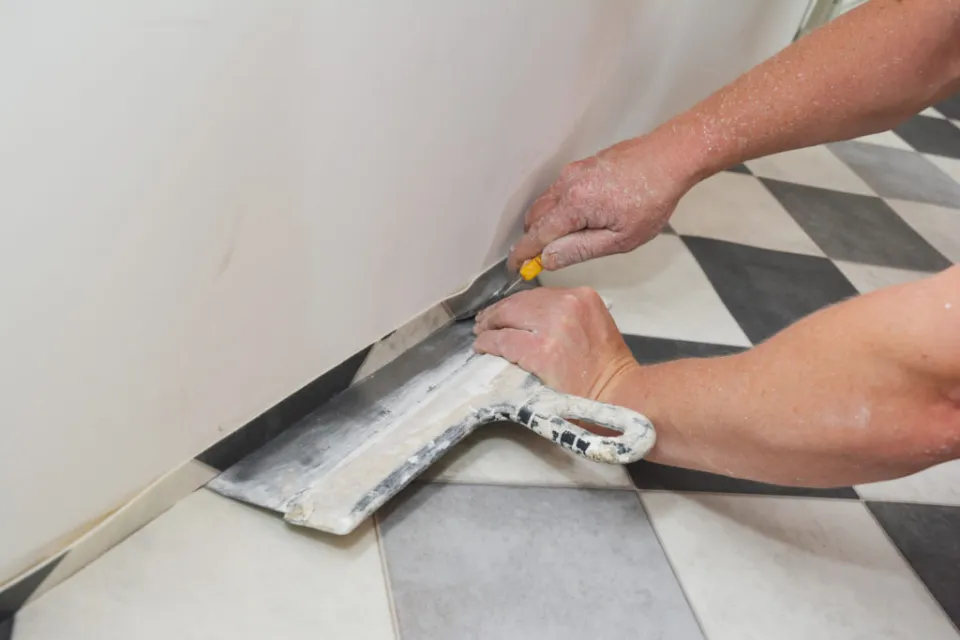You won’t need to use an underlayment if you’re installing LVP over an existing vinyl floor with a cushion backing or a tile floor that is below grade.
The majority of luxury vinyl tiles and vinyl flooring don’t need underlayment. Vinyl floors are made with a base layer, so adding underlay is unnecessary. This baselayer makes the vinyl flooring incredibly durable and comfortable to walk on. Only when the subsurface is uneven or has moisture problems might a vinyl floor require underlayment.
We examine the age-old question of why underlay for vinyl flooring is necessary and whether it is absolutely necessary in order to assist you with your vinyl flooring.
Why Underlay is Not Needed for Vinyl?

This is not necessary for vinyl flooring or underlay for vinyl click flooring. It’s a widespread misconception that vinyl flooring requires underlayment. With this kind of flooring, underlay is no longer necessary to waterproof your room; those days are over. While this cuts costs for the customer, it still leaves the question ‘why?’
Today’s vinyl flooring comes with a cushioned base layer; this eliminates the need for vinyl underlay. Because of the distinctive design of vinyl flooring, there is no chance of the floor shifting after Vinyl Plank Flooring installation. And the good news doesn’t stop there, by choosing to have an underlay for vinyl flooring, you increase the risk of punctures and dents.
Vinyl’s worst enemies are dents and punctures, both of which are difficult to conceal. Fortunately, vinyl is the least expensive type of flooring, so even if you do need to replace the entire floor, it won’t break the bank.
What Does This Mean?

This reduces the cost of purchasing this already-cheap flooring even further because you won’t have to worry about locating underlay for vinyl click flooring or regular lino. It does imply that the subfloor needs to be perfectly level, smooth, and clean. When vinyl is installed, any slopes, dents, or roughness underneath will show on the vinyl’s surface, giving your lovely new floor an unprofessional appearance.
The affordability point is probably the most crucial; whereas in the past you had to account for vinyl underlay as a cost, today’s vinyl is much less expensive while still offering a built-in thickness that is soft underfoot and doesn’t hurt your wallet.
Where Can Vinyl Be Fitted?
Vinyl is one of the most adaptable types of flooring, making it ideal for both heavy commercial and light domestic use. However, there are different types of vinyl flooring, each of which specifies the appropriate application and degree of durability. Vinyl is also entirely waterproof, making it the ideal material for kitchens and bathrooms. It is critical that you make the best decision possible for your needs in light of this.
Is Underlayment Necessary for Vinyl Flooring?

Vinyl flooring requires underlayment to be installed for a variety of reasons. You need it under your new flooring for stability, protection, and cushioning, but you also need it to keep your floor stable and durable. By installing LVP flooring directly on a concrete or plywood subfloor, people who don’t install underlayment put their floating floors at risk. The locking mechanism might disassemble as a result, the floor might deteriorate over time, and there might be other problems.
Reasons to Invest in LVT Flooring Underlay
Noise Reduction
The acoustics of LVT underlayment are excellent. It is made of high-density foam, designed to absorb sound, and will quiet down by roughly 16 to 20 dB. This is especially helpful if you live in an apartment complex or flat and don’t want to disturb your neighbors.
Improved Comfort
By adding an extra layer of foam between the tiles and subfloor, LVT underlay can significantly improve the comfort of the tiles – making them much softer and warmer underfoot.
Stability
Luxury vinyl tiles usually just click into place. It is very simple to install without the use of adhesive, but there is a chance that the tiles will shift over time. Underlay is an excellent way to stop this. Its foam texture can help keep the tiles firmly in place when sandwiched between the LVT and subfloor, stopping any unwanted movement.
Moisture Protection
Check the subfloor’s relative humidity before installing LVT to make sure it is below 75% because moisture and dampness can cause the tiles to lift, curl, and crack. If you think moisture will be an issue, it may be worth adding LVT underlayment. Most reduce the possibility of moisture accumulating beneath the tiles by having an integrated damp-proof membrane.

The Best Underlayment for Vinyl Flooring Depends on a Lot of Factors
If you’re installing new vinyl floors, you’ve probably spent ages looking into different types of flooring—vinyl, laminate, even different types of wood flooring. So we know that youprobably know a lot already. (Read More: 10 Best Mop For Laminate Floors – Best Ways to Clean)
But choosing the best underlayment for vinyl flooring entirely depends on many different factors—some of which aren’t so obvious. The biggest things to consider are:
- The type of vinyl flooring you purchase (sheet vs. plank, different types of cores, etc.)
- Your chosen installation method (glue-down, floating, etc.)
- Your subflooring’s composition (wood, concrete, etc.)
- The specifications of your specific product.
- Your specific needs.
- Your choice of vinyl flooring (sheet vs. plank, different types of cores, etc.)
- The type of installation you employ (glue-down, floating, etc.)
- Your subflooring’s construction material—wood, concrete, etc.)
- the details of the particular product you are selling.
- Your specific needs.
We’ll go into detail on each of these, but before we do, there is something we must be absolutely clear on. Underlayments are not always necessary for vinyl flooring. Indeed, using the incorrect underlayment will void the warranty on some floors.

Conclusion
Prior to installing a luxury vinyl floor over wooden floorboards, plywood must be installed on the subfloor. To ensure that your top layer of flooring doesn’t feel different during cold or hot periods, use a denser underlay that can handle the slight shrinkage and growth that occurs in your wooden subfloors throughout the course of the year.
FAQs
How to Determine If You Need Underlayment?
You can be sure that your luxury vinyl flooring will require underlayment. The only time you may not need to install underlayment is if there is already a pad attached to the LVP flooring you have purchased.
Can I Get a Soundproof Underlayment for Vinyl Plank?
For the upper levels of a house or in apartment buildings, soundproofing is of course crucial. The right underlayment can quiet footsteps; if you’ve ever lived beneath noisy walkers, you know the importance of this.
How Thick Does Underlayment Need to Be for Vinyl Plank Flooring?
The underlayment you use for vinyl plank flooring is typically thinner than it would be for other types of flooring. There are typically thicknesses between 1mm and 3mm when looking for vinyl plank underlayment.








